YOUR WATER CONSERVATION SPECIALIST. SAVE WATER! SAVE MONEY!
Irrigation Installation
Enhance your landscape's health and curb appeal with a smart irrigation system ensuring lush greenery while conserving water and promoting environmental responsibility. Beat the verano (summer) heat, prepare your landscape with a smart irrigation system today.
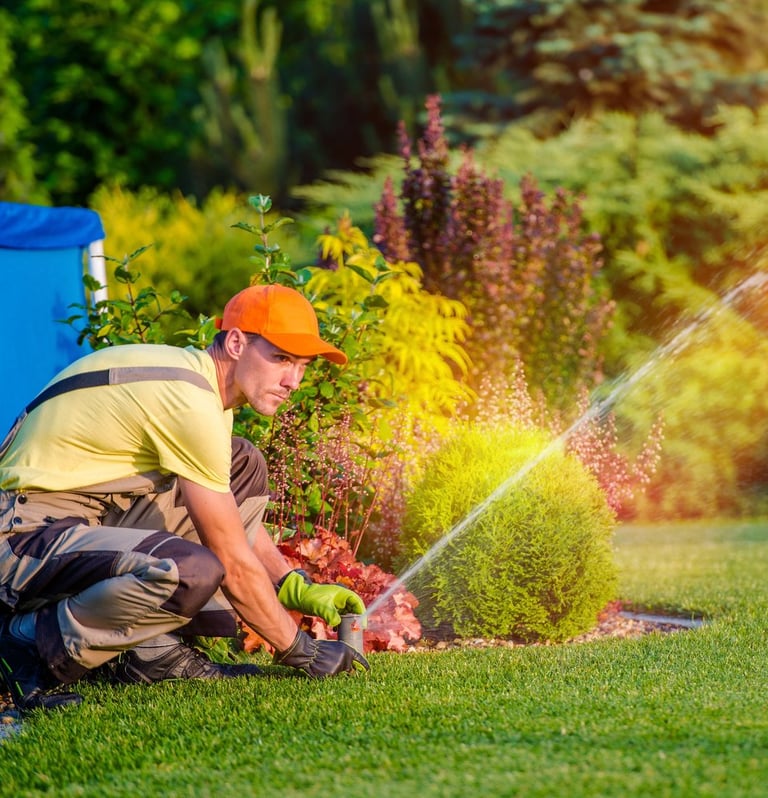


What Is Our Process?
01
Evaluate
Walk through the entire property to identify desired watering areas, specialty zones, and irrigation options. Measure water pressure (PSI) and flow rate (GPM). Inspect interior plumbing to locate the water source and determine the exit point for backflow installation. Identify any plumbing complexities, as well as potential pump use or water meter requirements, if applicable.
02
Design
Using available water pressure and flow rate, we determine the number of rotors and pop-ups each zone can support. Sprinkler head locations are flagged throughout the property, and a preliminary layout is drafted. Controller location, wiring route, and valve box placements are confirmed. Material list is finalized and an estimated project cost is presented to the client.
03
Permit
Installation
04
Submit all required documentation to the municipality, including the irrigation design, backflow details, water usage data, and signed installation agreement. Coordinate with inspectors as needed and ensure full compliance with local codes and regulations. Monitor permit status and respond to any revision requests from the city. Upon approval, we contact JULIE for utility locating, and schedule the installation date.
Verify utility markings from JULIE and confirm final design details with the foreman. Complete trenching, pipe installation, and sprinkler head placement according to the approved blueprint. Install the backflow device and connect it to the water source. Set up the controller and wiring, then fully test the system. Conduct a final walkthrough with the client to review system operation and ensure complete satisfaction.
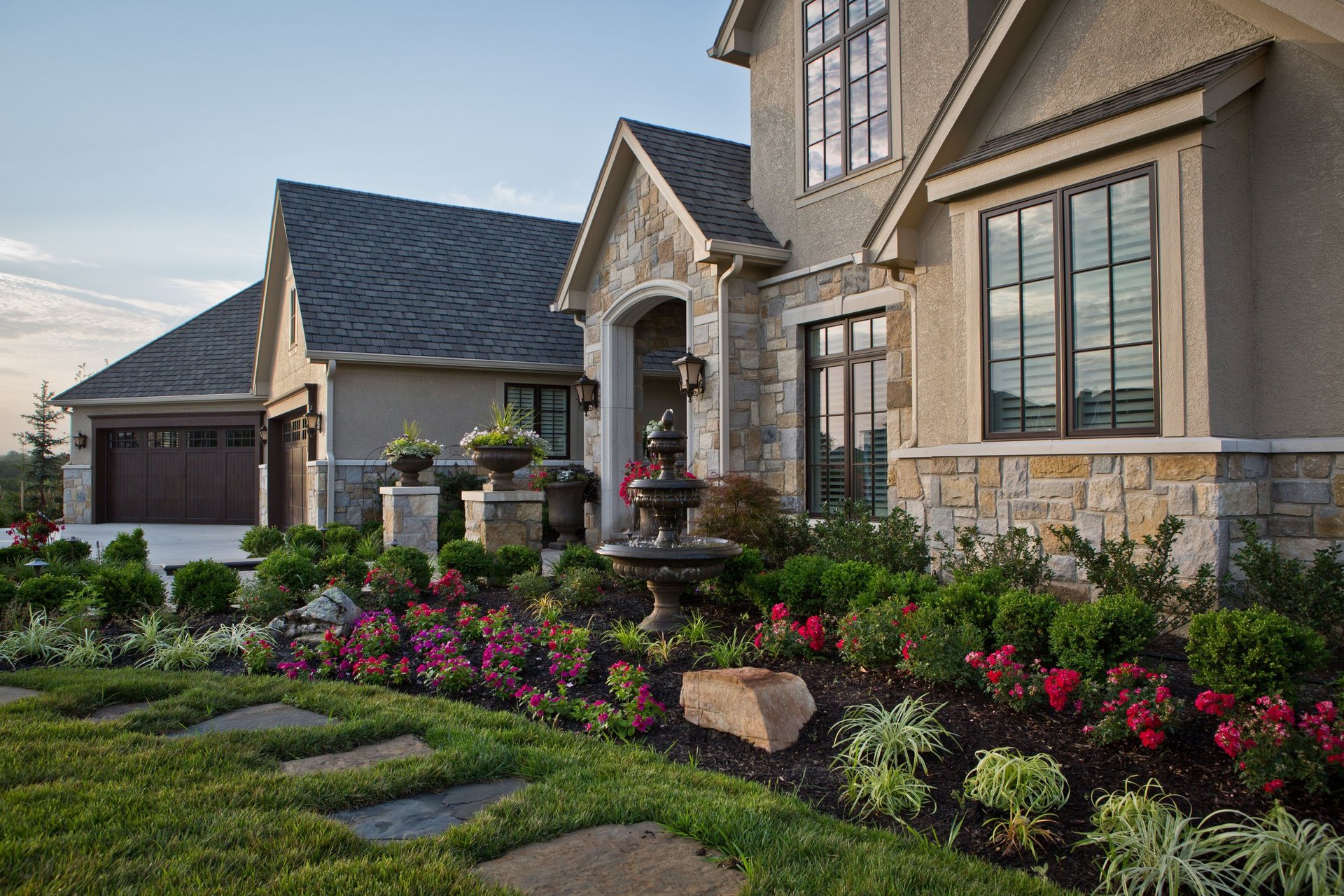
Irrigation Maintenance
Spring Start-Up
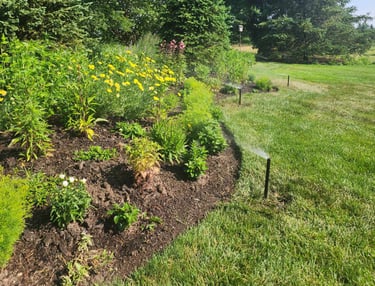

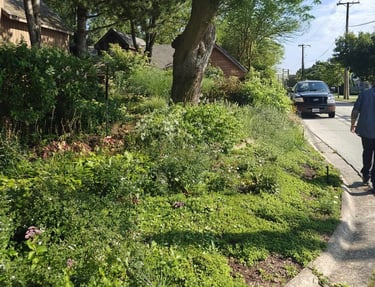

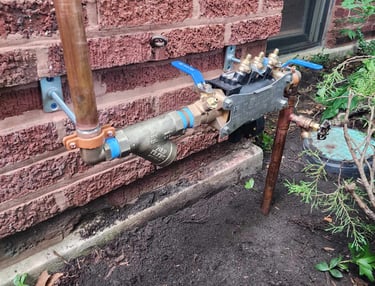

Mid-Season Checkup
A spring start-up consists of reactivating your irrigation system, locating buried heads, inspecting for damage, installing/inspecting the backflow preventer, and setting the controller for seasonal programming.
Irrigation systems must be winterized annually to prevent freezing, pipe damage, and costly repairs. This process involves shutting off the water and clearing the lines using an air compressor.
Fall Winterization
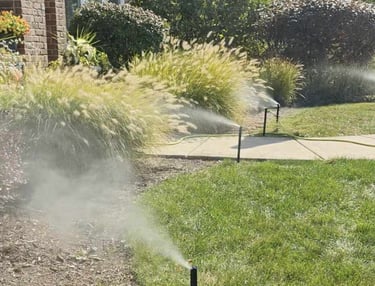

The Illinois Environmental Protection Agency (IEPA) mandates that all backflow prevention devices be inspected annually to ensure proper operation by a certified CCCDI-licensed plumber.
A mid-season inspection involves adjusting controller run times for peak summer weather, checking for browning areas, and fine-tuning coverage to ensure water reaches all plants even at full summer maturity.
Backflow Certification
System Modifications
Smart Watering Upgrades
System Repairs
🌿 Changing Up Your Landscape?
It's important to redesign your irrigation system to match your updated landscape layout. Doing so prevents watering inefficiencies and promotes water conservation. Updates may include relocating existing sprinkler heads to optimal locations for proper overlap coverage or expanding the system by adding new heads—or even a new zone—to meet increased water demand and support newly added landscape features.
🛠️ Got Any System Leaks or Damages?
Did you know that an undetected leak or broken sprinkler head can waste hundreds of gallons of water, spike your water bill, and even destroy your valuable landscape? Common signs of system damage include oversaturation or standing water in specific areas of your lawn or beds. Undiagnosed leaks can lead to mosquito breeding grounds, as stagnant water creates ideal conditions for pests. That's why routine maintenance such as spring start-ups, mid-season checkups, and winterization is essential for preventing costly issues and keeping your irrigation system running efficiently.
📱 Are You Aware of The Latest Irrigation Products and Features?
Irrigation technology has come a long way. From smart Wi-Fi controllers that let you manage your system remotely and automatically adjust watering times based on temperature changes, to rain sensors that prevent overwatering when nature lends a hand, to flow meters that track water usage and detect abnormalities, to automatic shut-off valves that add convenience during service or emergencies. Together these features create for a highly efficient, water-saving system. Smart irrigation isn't just convenient—it's a long term investment that pays for itself through reduced water bills and healthier landscapes.


